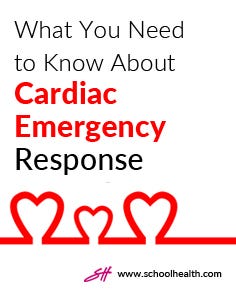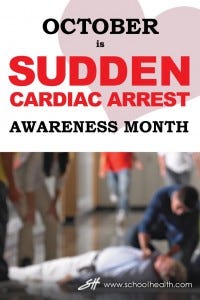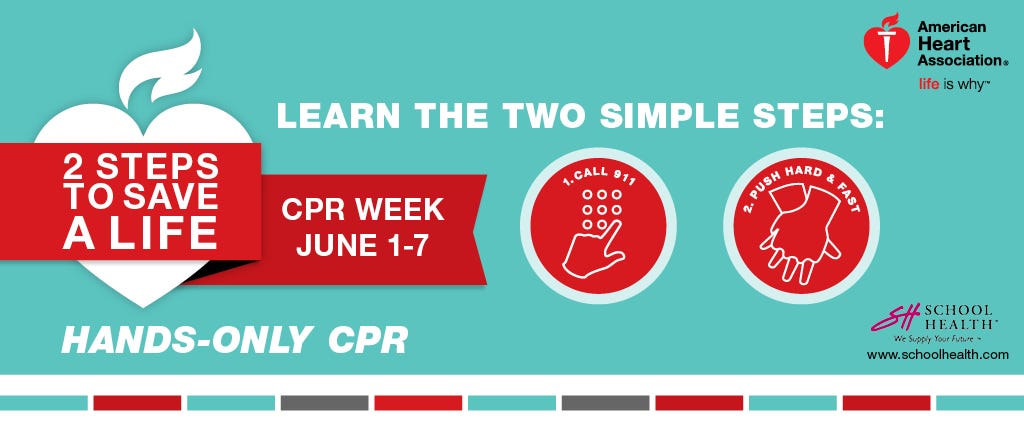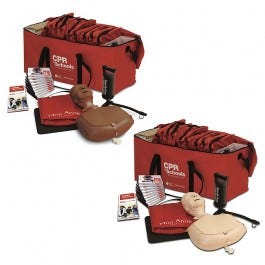What You Need to Know About Cardiac Emergency Response
- Jan 31, 2017
- 0 Comments
 In 2015, the American Heart Association (AHA) reported over 326,000 out-of-hospital cardiac arrest events. When cardiac arrest events occur outside of the hospital, the average survival rate is just 10.3 percent.But did you know that survival rates are three times higher if the event is witnessed by a bystander? And when a victim receives assistance, even by a lay bystander, the chances of survival can double, and in some cases triple! [1]
In 2015, the American Heart Association (AHA) reported over 326,000 out-of-hospital cardiac arrest events. When cardiac arrest events occur outside of the hospital, the average survival rate is just 10.3 percent.But did you know that survival rates are three times higher if the event is witnessed by a bystander? And when a victim receives assistance, even by a lay bystander, the chances of survival can double, and in some cases triple! [1]Take Action and Saves Lives
The first minutes of a cardiac emergency are the most critical, and even the best emergency medical services (EMS) personnel can’t reach victims right away. A study in the Canadian Medical Association Journal showed that people who suffer cardiac arrest on the upper floors of high-rise buildings are less likely to survive than those on the lowest floors. The higher floors are associated with longer response times for EMS personnel to reach victims, and they directly correlate to lower survival rates.[2]
But with a Cardiac Emergency Response Plan (CERP), we can help bridge the gap between a cardiac emergency and the arrival of EMS personnel. A CERP is a written document that outlines specific steps to take when a cardiac emergency occurs. According to the AHA, “A carefully orchestrated response to cardiac emergencies will reduce deaths in school settings and help ensure that chaos does not lead to an improper or inadequate response.” [3]
Is Your Cardiac Emergency Response Plan Complete?
Essential parts of a CERP include making sure that you have adequate staff on hand who are trained in CPR. When CPR is performed, even by a lay bystander, a victim’s chance of survival is greatly improved. Products like the AHA’s CPR in Schools Training Kit is an essential tool for training staff and students the proper way to perform CPR.
A CERP will also include making sure your school has enough AEDs, and that your AEDs are properly located. Remember that timing immediately after a cardiac emergency is critical. The number of AEDs at your school should be sufficient to enable your response team to retrieve an AED and respond to a victim within two minutes, both inside the school and on the school grounds. AEDs should have clear signage and should always be in locations that are always accessible. School Health offers a full line of AEDs and accessories to make sure that your school has the equipment you need.
Proper maintenance of AEDs is also critical. Imagine the nightmare scenario of investing in an AED program but not maintaining it. Suddenly a cardiac emergency occurs and your AED is retrieved only to find that the pads or batteries have expired. We hear from people who try to maintain their AED program using an Excel spreadsheet, but that is simply not enough – especially when your campus contains many AEDs or AEDs distributed across campus locations.
School Health Brand AED Program Management helps you manage all the AEDs at your location and even across your campus. What’s more, this system tracks all your responder certifications so you know that each person on your cardiac emergency response team has proper and continuous training. And, it keeps you compliant with local and state regulations by automatically registering your AEDs with local EMS services. You will even receive direct updates about changes to the regulations in your area.
When you have a complete CERP and include these essential elements, you can save lives when a cardiac emergency occurs. School Health works directly with the AHA to make sure that we can provide the products and information you need to be prepared. If you would like a consultation or on-site visit to discuss your CERP or lifesaving products for your school, please contact us.
[1] http://www.sca-aware.org/sca-news/aha-releases-2015-heart-and-stroke-statistics
[2] http://www.cmaj.ca/content/188/6/413
[3] http://cpr.heart.org/idc/groups/heart-public/@wcm/@ecc/documents/downloadable/ucm_477110.pdf




